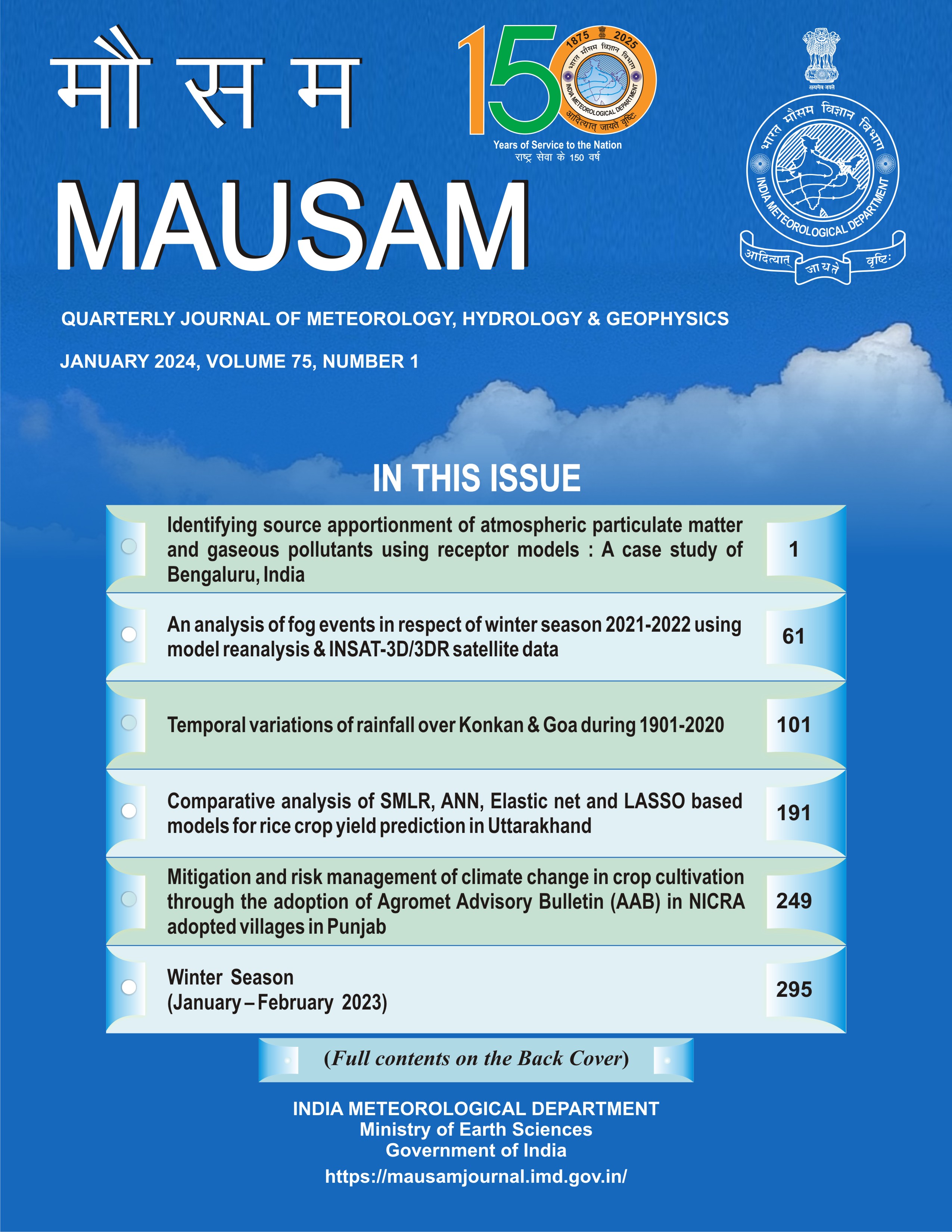Analytical concentration of pollutants with deposition using wind speed as power and logarithmic law
DOI:
https://doi.org/10.54302/mausam.v75i1.5899Abstract
The mathematical formulation of the concentration of the diffusing particles in air was derived by solving analytically the advection-diffusion equation taking into consideration: (1) the vertical variation of wind speed and eddy diffusivity with height above ground. (2) the vertical diffusion is limited by an elevated impenetrable inversion layer located at the top of the atmospheric boundary layer (ABL) of height h. (3) the dry deposition of the diffusing particles at the ground surface which was included through the boundary conditions. A power law profile is used to describe the vertical variation of eddy diffusivity with height, while the sum of power law profile and logarithmic law is used to describe the vertical variation of wind speed with height above ground surface. The decay distance of a pollutant along the wind direction was derived. The present solution was evaluated against the dataset from Hanford diffusion experiment in stable conditions. The results are discussed and presented in illustrative figures.
Downloads
Published
How to Cite
Issue
Section
License
Copyright (c) 2023 MAUSAM

This work is licensed under a Creative Commons Attribution-NonCommercial 4.0 International License.
All articles published by MAUSAM are licensed under the Creative Commons Attribution 4.0 International License. This permits anyone.
Anyone is free:
- To Share - to copy, distribute and transmit the work
- To Remix - to adapt the work.
Under the following conditions:
- Share - copy and redistribute the material in any medium or format
- Adapt - remix, transform, and build upon the material for any purpose, even
commercially.



